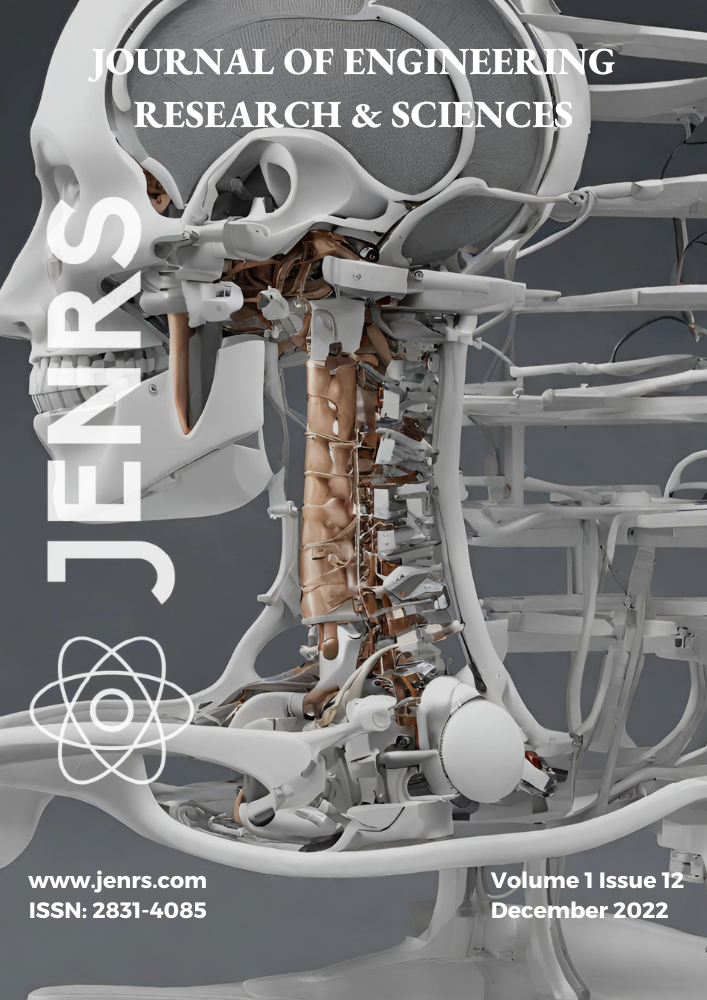
Publication Month: January 2022, Page(s): A1 – A1
Publication Month: January 2022, Page(s): B1 – B1
Publication Month: January 2022, Page(s): C1 – C1
Publication Month: January 2022, Page(s): D1 – D1
Sooyeon Choi, Richard A. Feinberg
J. Engg. Res. & Sci. 1(12), 1-8 (2022);
Cryptocurrency is gaining worldwide recognition. This research examines the role of personality and psychological factors in consumers’ cryptocurrency adoption behavior. 452 samples are collected from U.S consumers and the data are analyzed by PLS-SEM. The findings reveal that consumer innovativeness has a positive influence on the intention to use cryptocurrency and its impact is partially mediated by attitude. The LOHAS lifestyle moderated the influence of consumer innovativeness on the cryptocurrency intention as well as the relation of attitude with the intention. This research provides theoretical and practical implications for the cryptocurrency market.
Indrit Enesi, Anduel Kuqi
J. Engg. Res. & Sci. 1(12), 9-14 (2022);
3D reconstructions are widely used, the main challenge of them is the accuracy especially for small and detailed objects. Various software exists for 3D reconstruction, free and paid ones with various performances. In this paper the performance of 3D object reconstruction will be evaluated in terms of size accuracy. The aim of the paper is analyzing the size accuracy of the reconstructed 3D models based on photogrammetry for small objects. Meshroom is used for 3D photogrammetry reconstruction and various software are used for measurement. MeshLab, Meshmixer and Blender and 3D Slicerare used for measurements, all are free software’s. Experimental results show a high accuracy for objects sizes measured using Meshmixer.
Swanand Pachpore, Pradeep Jadhav
J. Engg. Res. & Sci. 1(12), 15-20 (2022);
Root Canal Treatment (RCT) is one of the most common endodontic clinical procedures performed in the field of dentistry amounting to almost 25 million performed every year. It is thus essential for endodontists to ensure best practices. However, through a recent survey, it has been observed endodontists resort to supplemental methods and protocols during procedures due to the scarcity of precision devices in the market. This not only compromises sound practices but also elevates the risk of operational failures & additional infections at the cost of the patient. Despite this deviation, the survey further highlights that touch and heat devices offer better stability, precision, and safety. This paper sets out to explore the ongoing challenges faced by endodontists in this field particularly in the methods to cut Gutta-percha and seal the canal and establish the need for heating element technology in such procedures.
Joel Ogunyemi, Olawale Ezekiel Fagbuaro, Henry Sunday Okeke
J. Engg. Res. & Sci. 1(12), 21-27 (2022);
Pulse width modulated (PWM) inverter has applications in many areas as it offers control of voltage, frequency, and harmonic in one power stage. In the practical design of three-phase inverter circuits, a proper understanding of the operations and peculiarities of the specific model to be built is necessary. Most often, perhaps due to different models and configurations; these details are often omitted or assumed to be obvious. An IGBT-based PWM inverter for a 0.5hp induction motor was designed and implemented. Though the implementation posed a challenge to realize, the experience obtained during the process informed the design consideration presented in this paper. The power supply requirements, gate drive requirements, driver protection and dv/dt protections are necessary considerations for successful implementation. This paper presents detailed specific requirements when designing a PWM inverter with IGBT as a driver for induction motor application. The focus is on the theoretical analysis and important design considerations during the practical implementation of an inverter. Different stages involved are analyzed and discussed from the input stage to the output load section. The model used involved single-phase ac input which is rectified to dc. At the output of the rectifier is a large filter capacitor to maintain a constant dc link voltage. The insulated gate bipolar transistor was used as a switching device to drive the 0.5hp induction motor. The analysis simplified inverter design, especially for beginners.
Fabi Jonathan Kehinde, Akinseinde Olubola Atanda
J. Engg. Res. & Sci. 1(12), 28-37 (2022);
Project success factors are germane in achieving project objectives by stakeholders. The research investigates the stakeholder’s perception of project success factors for highway project in Nigeria. Therefore, the specific objectives is to identify and assess factor influencing the success of highway project in Nigeria. To achieve the main objective of this paper, two hundred (200) questionnaires were administered on major stakeholders in the highway sector; comprising highway engineers both in consultancy firms and client organisations, and quantity surveyors using random sampling technique. Ninety-four (94) questionnaires were found useful for the analysis, yielding a response rate of 47%. Statistical Package for Social Sciences (IBM SPSS Version 22) was used in analysing the data. The results indicated that clear project goals (4.68), experienced design team (4.59), proper project planning (4.51), availability and adequacy of resources (4.50) and on time decision making (4.48) in that order are the most CSFs in highway projects in Nigeria. However, a Kruskal-Wallis test conducted showed that there is no statistically significant difference in the ranking scores among the three (3) stakeholders at 5% significance level, except for four out of the twenty two factors assessed. The group means vary slightly from the individual means obtained from different stakeholders but there is no significant difference in the means. The slight variation is due to the difference in opinions of the stakeholders as each group has priority for different project objectives. The paper concluded that these CSFs need to be given serious attention if the issues of cost and time overrun, project abandonment and litigation have to be a thing of the past in the Nigerian construction industry.
This sidebar is currently being updated and may temporarily overlap with the pages.

This work is licensed under a Creative Commons Attribution-ShareAlike 4.0 International License.